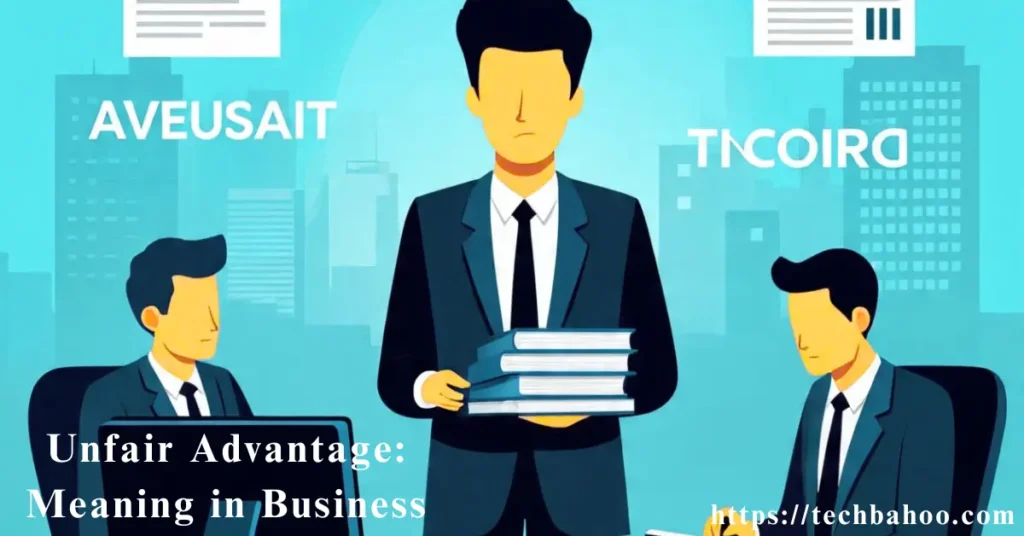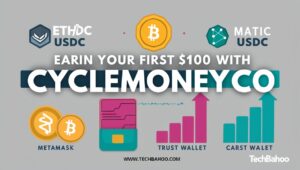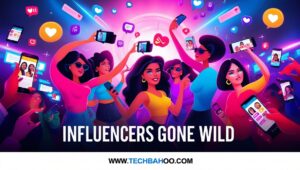In the world of business, success doesn’t come easy. Everywhere, people are trying to create something that customers will notice and value.
Sometimes it’s the business model, other times it’s a special product or service that sets them apart.
I’ve seen how the way of delivering value can make a huge difference when competitors struggle to deliver at the same level.
What truly stands out is when a unique selling proposition changes the game and reshapes the competition. Many successful entrepreneurs point to this exact factor and call it an unfair advantage.
I’ve often thought about how that term is used, sometimes almost facetiously, because companies rarely operate by rules that feel completely fairly applied.
Still, a competitive advantage isn’t about kindness or fairness—it rarely carries a moral component. Instead, it comes from the company finding its place in the right space and learning how to act more efficiently than anyone else.
In my own experience, being able to provide something faster or better than others builds trust, loyalty, and momentum that others can’t easily match.
What Is an Unfair Advantage?
An unfair advantage is something that makes you or your business stand out in a way others can’t easily replicate.
It’s not about cheating or bending rules — it’s about having a strength deeply tied to who you are, your experiences, or your unique resources. In the Lean Canvas Model, this concept explains why some entrepreneurs succeed even with fewer resources.
For example, Google didn’t just build another search engine. Its secret PageRank algorithm, protected by patents, gave it an innovation incentive and a lasting competitive advantage in the tech industry.
The company’s heavy investments in R&D, combined with its algorithm protection and intellectual property, helped establish technological leadership that powered its dominance in Google Search.
Similarly, Coca-Cola built its empire through a trade secret — its secret recipe. This piece of intellectual property is a classic competition barrier, creating market leadership and brand identity.
No matter how many copycats appear in the beverage industry, none can truly match Coca-Cola’s unique flavor or its brand heritage protected by IP laws.
Types of Unfair Advantage
Unfair advantages come in many shapes. Some are based on skills or networks; others depend on technology, timing, or branding. Below is a table explaining the most common types of unfair advantage.
| Type | Description | Real-life Example |
| Knowledge & Expertise | Specialized know-how or years of experience | Spotify’s proprietary technology for music streaming offers fast playback and personalization, improving listener satisfaction. |
| Network & Relationships | Strong connections or loyal partnerships | Coursera built a network of university and industry partners over decades, giving it access to high-quality content others can’t easily replicate. |
| Brand & Reputation | Trust built through authenticity and storytelling | Patagonia’s brand story and environmental responsibility resonate with consumers, strengthening customer loyalty. |
| Timing & Market Entry | Being early in a new trend or industry | Netflix disrupted the media industry with DVDs by mail and no late fee before shifting to online streaming. |
| Resources & Capital | Access to funds, technology, or rare materials | Google’s patents and massive company assets keep it ahead of competitors. |
Every advantage here grows stronger with time, innovation, and consistency. It’s not just what you have — it’s how you use it.
Also Visit: Software Review Your All‑In‑One Tool for File Management
5 Real-life Unfair Advantage Examples
Let’s dive deeper into five real cases where businesses turned their differences into dominance. Netflix began as a small DVD rental service that mailed discs directly to customers’ mailboxes.
It’s a no-fee model and subscription system that changed how people consume entertainment. Later, the shift to online streaming and the creation of exclusive content like House of Cards turned it into a media industry giant.
Its platform exclusivity, original productions, and focus on user experience created unmatched audience engagement and subscriber growth, leaving Blockbuster behind.
Patagonia, again, is a textbook example. Instead of chasing frequent collection releases, the brand focused on repair programs, environmentally friendly farming materials, and extending the lifespan of products.
This deep environmental responsibility aligns with consumers’ virtues, offering a mix of sustainability and brand loyalty that competitors can’t easily imitate.
Coca-Cola’s proprietary formula is its strongest shield. Guarded for over a century, this secret recipe ensures product uniqueness, global recognition, and market dominance in the beverage industry. It’s more than a drink; it’s a brand story tied to heritage and emotion.
Google holds countless patents and leads in product excellence through relentless research and development. Its know-how, patent protection, and technological leadership give it a lasting edge over competitors.
Spotify, too, has its own unfair advantage through proprietary streaming technology and software patents.
Its playlist generation algorithms and music discovery features improve user experience and customer retention, creating powerful competitive differentiation in the music industry.
Unfair Advantage: Meaning in Business

In business, having an unfair advantage means a company possesses a distinct edge that gives it an upper hand in the market. This advantage can put you ahead of your rivals because it’s not commonly available or easily accessible to your competitors.
From my own experience, a genuine advantage is often challenging for others to replicate or even acquire, and that’s what makes it so powerful.
I’ve seen unfair advantages come in various forms. Sometimes it’s about exclusive access to a valuable resource or having a unique blend of skills and expertise.
In other cases, it could be a strong brand recognition, proprietary technology, or a highly efficient, cost-effective operation.
These factors, when used wisely, help set a business apart from the crowd and drive success in ways that are often difficult for others to replicate.
What makes these exceptional qualities stand out is how they rely on unconventional strengths.
They don’t follow the usual path, but instead build something rare that’s hard to copy. In my journey,
I’ve realized that when a business focuses on such strengths, it not only gains a competitive edge but also builds lasting value that’s far beyond what others expect.
What is an unfair advantage in the Lean Canvas Model?
When I first started working with Lean Canvas, I realized it’s more than a single-page tool—it’s like a painter’s canvas where you can map out your business idea step by step.
With its nine building blocks, it helps you deconstruct and represent your business models visually, giving you a clear picture of how all parts fit together.
Unlike an actual painting, it’s never truly done; you can always refine, learn, and return to it as your thinking, testing, and ideas evolve.
The fifth element of this model—the unfair advantage—isn’t just another building block to fill in; it’s the soul of what makes your new or existing venture stand out.
It’s not a linear activity, because as your tool grows, so does your understanding of what truly gives you that unbeatable edge.
From my experience, the unfair advantage goes deeper than a competitive advantage. While a competitive advantage might come from product quality, customer service, or specific product features, these can be copied as competitors catch up with similar capabilities or offerings.
But an unfair advantage is defensible, hard to replicate, and unique to your product or service.
It’s the distinct factor that adds value, sustainability, and exclusivity—the kind of edge that can’t be easily replaced by competing products or alternatives. It’s what allows your company to differentiate itself in a way that feels authentic and lasting.
Over the years, I’ve learned that an unfair advantage doesn’t fade when the market evolves or competitive advantages shift. Instead, it provides durable, long-term leverage that keeps your business model thriving.
Whether it’s a special skill, insider knowledge, or loyal customers who believe in your brand, that edge becomes your secret weapon.
It’s not something you can simply build overnight; it takes insight, persistence, and a willingness to learn from every iteration of your Business Model Canvas.
Unique Value Proposition vs Unfair Advantage: What’s the Difference?
It’s easy to mix up a unique value proposition (UVP) with an unfair advantage, but they serve different purposes in business. The UVP defines what makes your offer valuable to customers, while the unfair advantage defines why competitors can’t easily copy it.
| Aspect | Unique Value Proposition (UVP) | Unfair Advantage |
| Definition | Explains how your product benefits customers | Highlights what others can’t easily duplicate |
| Focus | Customer value | Internal strength or leverage |
| Example | “Fastest delivery service in the city.” | “Exclusive logistics network ensuring unmatched speed.” |
In the apparel industry, a company may say its UVP is “offering sustainable clothes at affordable prices.” But its unfair advantage might be its long-term vendor relationships, deep supply chain control,
or eco-friendly production process — all of which are harder for competitors to replicate. A brand like Patagonia doesn’t just have a UVP; it has an unfair advantage rooted in sustainability and authenticity.
How Do You Create and Leverage Your Unfair Advantages?
Finding your unfair advantage starts with self-awareness. You must first identify what makes you different — your story, skills, network, or insights.
On platforms like Icanpreneur, entrepreneurs and product developers use tools such as customer problem interviews and SWOT analysis to uncover hidden strengths.
Understanding customers’ needs, problem space, and job-to-be-done helps pinpoint areas where you’re uniquely positioned to excel.
Once you’ve identified your advantage, the next step is to develop, apply, and amplify it. For instance, Netflix turned early customer trust into a massive content creation engine.
Google turned its innovation into billions in advertising revenue. Patagonia turned its virtues into customer loyalty and a competitive edge.
In digital marketing, the same principle applies. A company with deep audience engagement and powerful brand loyalty has a natural unfair advantage in direct marketing and customer retention.
Identify → Develop → Apply → Amplify
To make your unfair advantage sustainable, you must protect it. That could mean filing patents, building stronger business relationships, or maintaining a proprietary process. The goal is to turn what’s unique about you into something that lasts.
FAQs
What is the unfair advantage summary?
Explains that founders of successful startups exploit their unfair advantages, the qualities or conditions that give them an edge over competitors.
How long is the Unfair Advantage Show?
An Hour.
What is the unfair advantage of London?
An intimate and unique theatrical event
What is the goal of an unfair advantage?
To achieve a unique, sustainable, and difficult-to-replicate competitive position, leading to increased success, long-term profitability, and a stronger market presence.
What is the law of unfair advantage?
A situation where a person or business gains an unfair commercial advantage over another by using a trademark that is similar or identical to an existing trademark.
Final Thoughts
Every person and business has something special that others can’t easily copy — that’s your unfair advantage. The secret lies in recognizing it early, nurturing it with intention, and using it wisely.
Whether it’s innovation like Google, storytelling like Patagonia, or strategy like Netflix, the lesson remains the same: the strongest advantage is the one that grows from your values, vision, and commitment.











